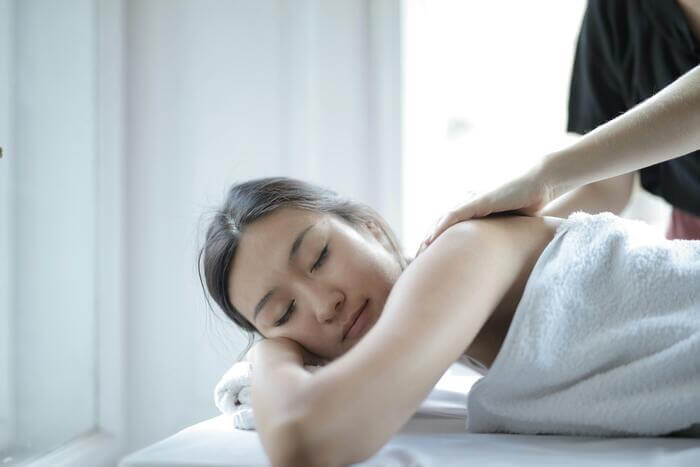An Asian massage is a massage performed by an Asian masseuse, often incorporating traditional techniques that focus on relaxation and body healing. The experience begins with a table shower, a distinctive feature of many Asian massage therapies. Warm water is gently poured over your body while you lay on a padded table, and the massage therapist ensures that every part of your body, including your face, is thoroughly cleansed and refreshed.
Once you’re dried off, the therapist escorts you to a private massage room. There, you’ll lie face-down on a comfortable massage table, and a towel is carefully draped over your body for modesty and warmth. The masseuse will then begin applying oil to your back, using smooth, flowing strokes to help your muscles relax and release tension.
The Benefits of an Asian Massage
Asian massages often emphasize long, rhythmic strokes and pressure point manipulation. These techniques aim to improve blood circulation, release muscle tension, and promote deep relaxation. The use of oils enhances the overall soothing experience, allowing your body to fully unwind as stress and tightness melt away.
Many Asian massages incorporate aspects of traditional Chinese medicine or Thai massage, which involve stretching, joint manipulation, and focused pressure on specific energy points known as meridians. This holistic approach balances both the body and mind, providing not only physical relief but also mental rejuvenation.
Some types of Asian massage may also include reflexology, where pressure is applied to specific points on the feet, hands, or ears, believed to correspond to different organs and systems in the body. Reflexology can provide additional therapeutic benefits, such as improving digestion, reducing anxiety, and boosting overall well-being.
Types of Asian Massage Techniques
Asian massages vary greatly depending on the technique used. Here are some popular types:
- Shiatsu Massage – Originating from Japan, Shiatsu focuses on applying pressure with the fingers, thumbs, and palms to specific points on the body. This method helps alleviate pain, reduce stress, and balance the body’s energy flow.
- Thai Massage – Known for its dynamic movements, Thai massage involves stretching and deep pressure. It’s often referred to as “yoga massage” and is ideal for improving flexibility, circulation, and relaxation.
- Chinese Tui Na Massage – Rooted in Chinese medicine, Tui Na focuses on acupressure and manipulation of the body’s soft tissues. It’s believed to restore the balance of yin and yang, helping with both physical and emotional healing.
Each type of Asian massage has its own unique benefits, tailored to different preferences and needs.
Conclusion: A Path to Total Relaxation
An Asian massage offers a one-of-a-kind experience that blends physical relaxation with deep healing. Whether you’re looking to relieve muscle tension, enhance flexibility, or achieve mental clarity, the diverse range of Asian massage techniques provides options for everyone. From the soothing flow of oil massages to the pressure-point focus of Shiatsu or Tui Na, this ancient practice helps you rejuvenate both body and mind.
If you’re in need of a relaxing escape, an Asian massage may be the perfect solution to help you de-stress and restore balance in your life.

